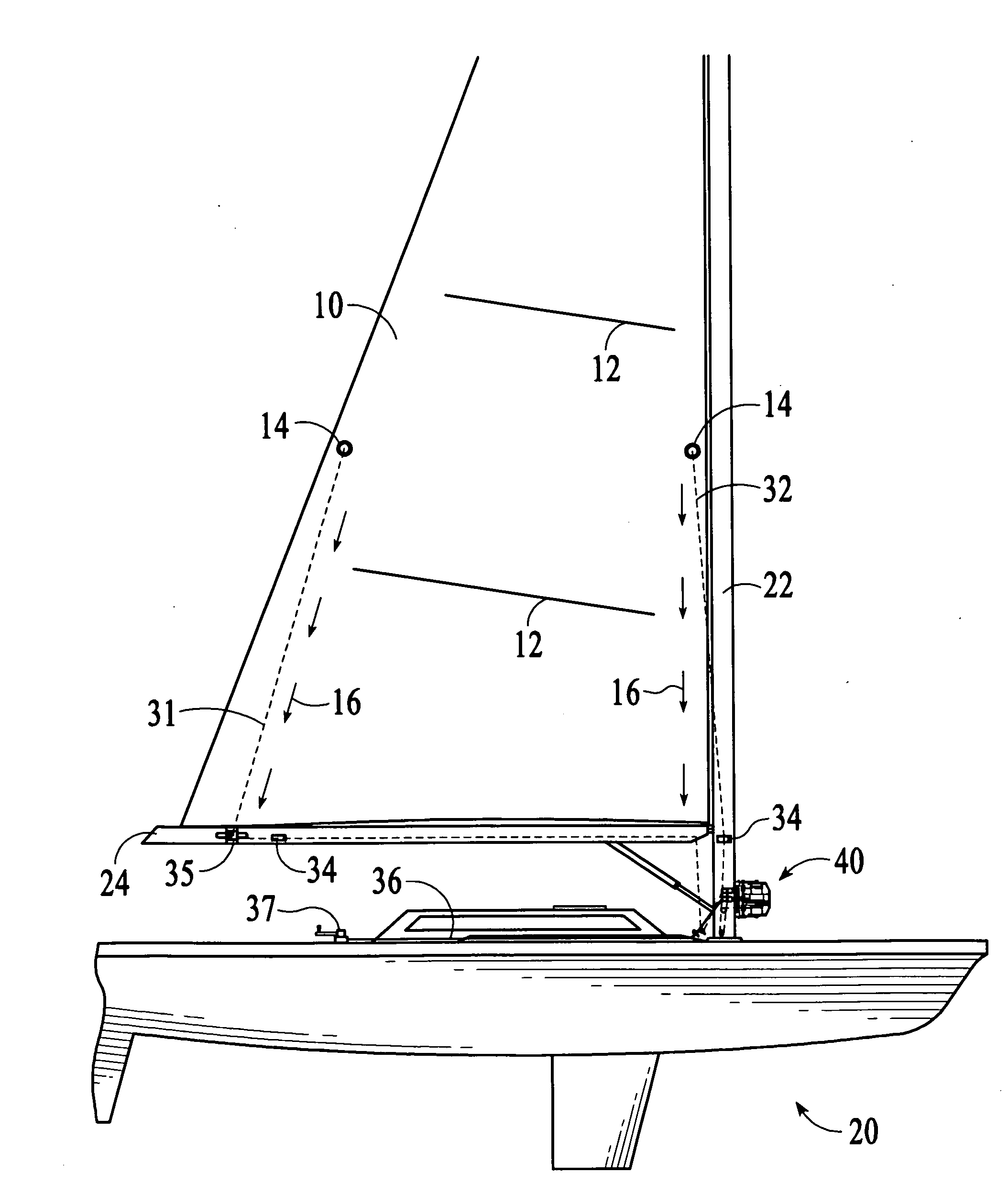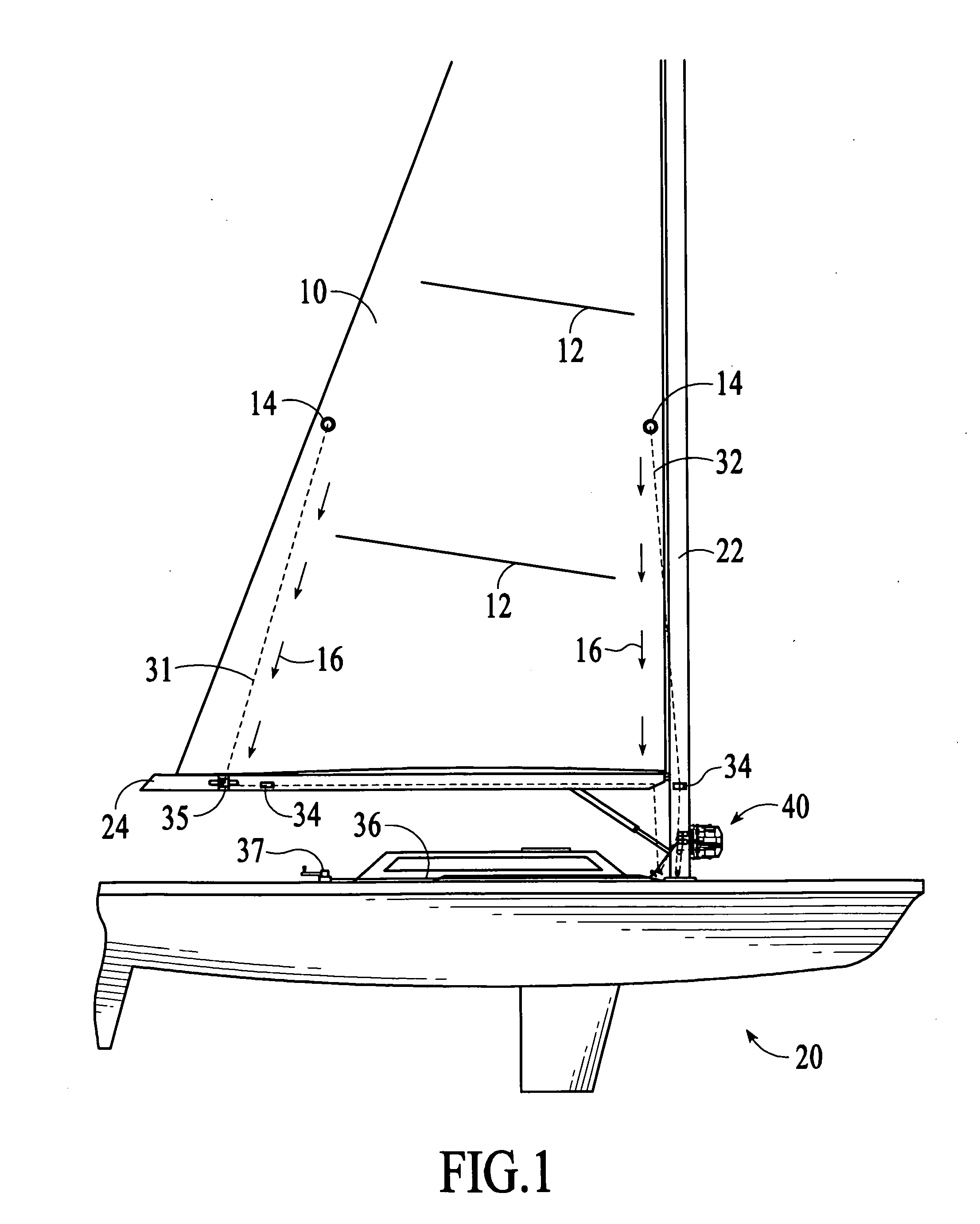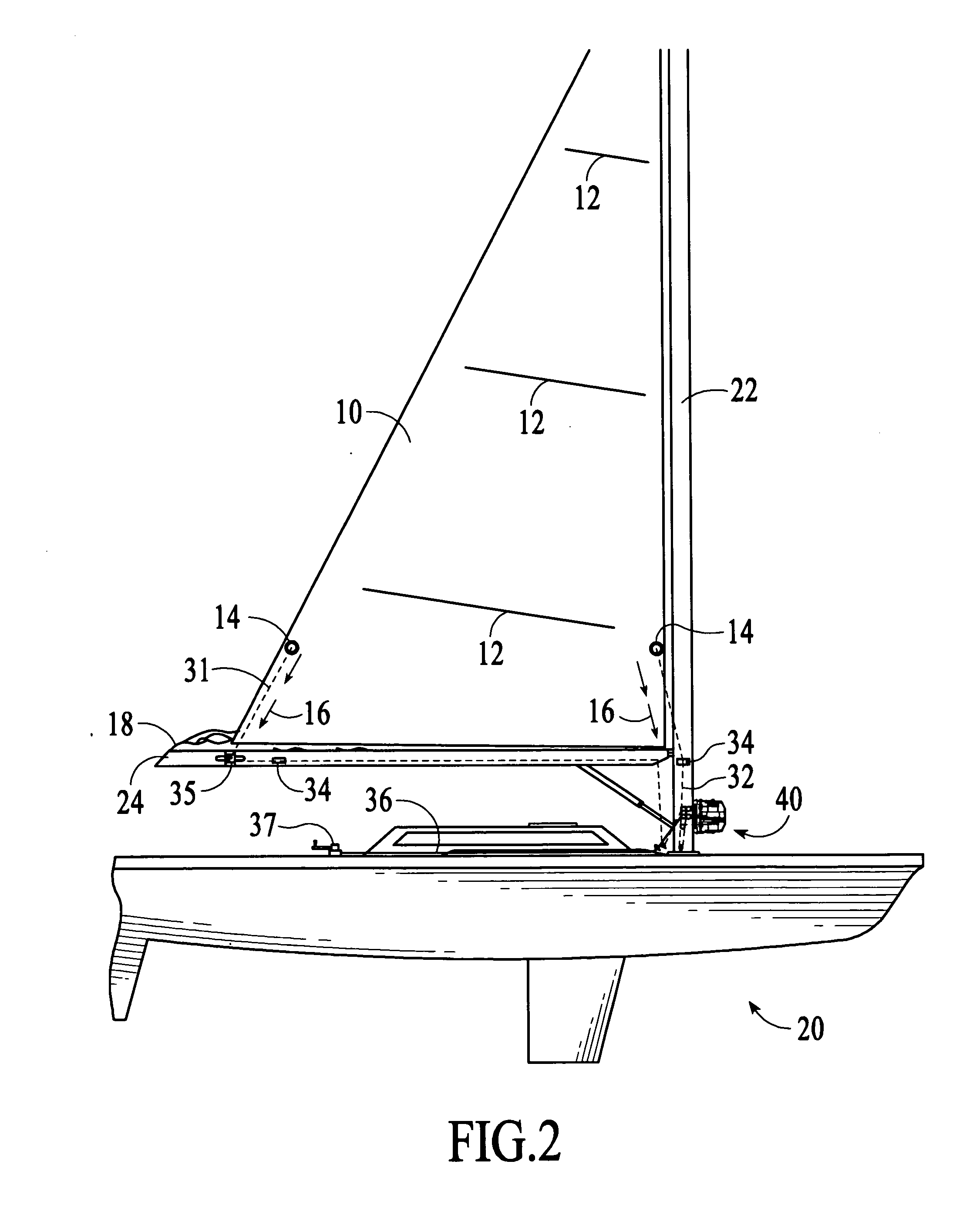Mainsail reefing system
a reefing system and mainsail technology, applied in the field of marine equipment, can solve the problems of requiring at least one crewmember, affecting the safety of the crew, and the reefing winch can also present problems for the crew, so as to minimize the amount of line and minimize the load of the sail
- Summary
- Abstract
- Description
- Claims
- Application Information
AI Technical Summary
Benefits of technology
Problems solved by technology
Method used
Image
Examples
Embodiment Construction
[0070]The present invention will now be described in detail with reference to the drawings, which are provided as illustrative examples of the invention so as to enable those skilled in the art to practice the invention. Notably, the figures and examples below are not meant to limit the scope of the present invention to a single embodiment, but other embodiments are possible by way of interchange of some or all of the described or illustrated elements.
[0071]The mainsail reefing system of the invention is a mechanical system designed to allow sailboats of any size to reef the mainsail by pulling on a single line led to the vessel's cockpit. To “reef” a mainsail means to reduce the working surface area of the sail, so that the vessel does not heel excessively as wind strength increases. The mainsail reefing system of the invention maximizes mainsail reefing efficiency by greatly reducing the total amount of line the crew must haul in to complete the reef, relative to conventional main...
PUM
 Login to View More
Login to View More Abstract
Description
Claims
Application Information
 Login to View More
Login to View More - R&D
- Intellectual Property
- Life Sciences
- Materials
- Tech Scout
- Unparalleled Data Quality
- Higher Quality Content
- 60% Fewer Hallucinations
Browse by: Latest US Patents, China's latest patents, Technical Efficacy Thesaurus, Application Domain, Technology Topic, Popular Technical Reports.
© 2025 PatSnap. All rights reserved.Legal|Privacy policy|Modern Slavery Act Transparency Statement|Sitemap|About US| Contact US: help@patsnap.com



